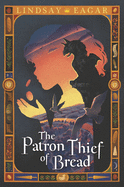
In the spectacular middle-grade novel The Patron Thief of Bread, an eight-year-old girl called Duck wages an internal battle over her loyalties. Are the Crowns, a ragtag band of orphans who roam the streets relieving townspeople of their pocket change, her family? Or does she belong with the kind "behemoth baker" to whom she is fake-apprenticed to keep the orphans in bread and coin?
Duck, "a pale and grimy girl with dull hair," and the Crowns move from "alleyway to bridge to lodge," always on the lookout for a territory unmarked by other street gangs. When they come up with a scheme to swindle a baker by installing Duck as an apprentice, hopes are high that the children can finally settle someplace for a while. Duck is proud to be selected, but anxious about leaving the relative safety of the ruined, never-completed cathedral where the Crowns are staying: "The streets meant freedom. Meals were never guaranteed, yes... but they were their own masters." Her sense of allegiance becomes more complicated as she grows close to Master Griselde, the near-blind baker. What the baker has to offer--security, regular meals, the love of an adult mother figure--is enticing, too. How can Duck love and live two different lives?
Lindsay Eagar (Hour of the Bees; Race to the Bottom of the Sea) is a master of nuanced characterizations and setting descriptions. Duck's story alternates with chapters that feature a gargoyle's grumpy and poignant commentary, adding a fantastical element and cathedral-high perspective to the street-level action. Duck's heartrending quandary about what makes a home is as relevant today as ever. --Emilie Coulter, freelance writer and editor

